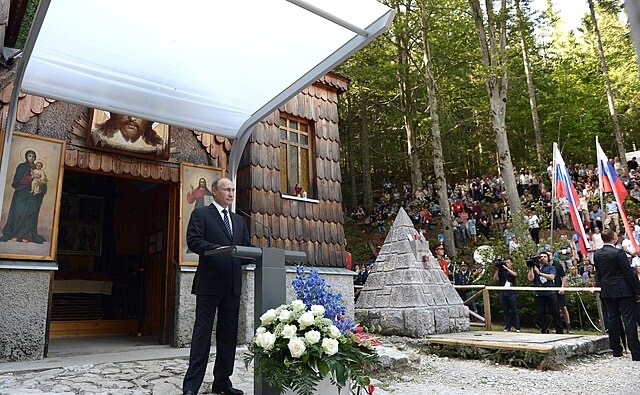The Easter Ceasefire Announcement
On April 19, 2025, Russian President Vladimir Putin announced a temporary Easter ceasefire in Ukraine, calling it a gesture of goodwill to mark the Orthodox Easter weekend. The truce, set to begin at 6:00 PM Moscow time on Saturday and last until midnight Sunday, comes amid escalating battles across the war-torn region. While framed as a humanitarian pause, Ukraine has expressed skepticism, pointing to ongoing drone attacks and warning that the announcement may be more strategic than sincere.
This announcement marks a significant, if controversial, moment in the conflict. With battles raging in regions like Odesa, Sumy, and Kursk, many observers are questioning whether this ceasefire is a genuine attempt to pause hostilities—or a calculated move aimed at reshaping international perception while gaining strategic ground.
Why This Development Matters in the Russia-Ukraine Conflict
The declaration of a ceasefire, even a temporary one, is always significant in the context of protracted conflict. It can allow for humanitarian aid delivery, evacuations, and even potential diplomatic movement. However, if violated or used as a smokescreen, it can damage trust and prolong the war. For many Ukrainians, the announcement is being viewed not as an olive branch but as a carefully orchestrated move in an increasingly complex military chess game.
Details of the Ceasefire
Timing and Scope of the Ceasefire
According to the Kremlin, the ceasefire will last from 6:00 PM on Saturday to midnight on Sunday (Moscow time), aligning with Orthodox Easter celebrations. Putin stated that Russian forces will halt offensive operations during this window, provided that Ukrainian forces do not exploit the pause for tactical advantage. Russian military units have been instructed to maintain defensive readiness in case of provocations.
This is not the first time Russia has announced a holiday ceasefire. Similar pauses have been declared in the past around Christmas and other religious dates, often with mixed results. Whether this particular truce holds depends largely on reciprocal action—or inaction—from Ukraine.
Putin’s Statement and Justification
In his televised statement, President Putin said, “As Orthodox Christians around the world come together in peace, we too must recognize this moment and take a step back from the battlefield. Russia will observe a ceasefire during Easter to allow for prayers, family gatherings, and reflection.
However, he also warned that Russian troops would respond “immediately and decisively” to any Ukrainian attempt to “take advantage” of the ceasefire, casting doubt on how long the calm may last and how sincere the intentions behind it really are.
Ukraine’s Response to the Ceasefire
Zelenskyy’s Skepticism and Security Concerns
Ukrainian President Volodymyr Zelenskyy expressed immediate skepticism regarding Russia’s sudden shift in tone. In a national address, Zelenskyy pointed out that drone attacks and air raid sirens had continued to disrupt life across Ukraine, including in major cities such as Odesa and Kharkiv, even after the ceasefire was announced.
If you claim a ceasefire and send drones in the same breath, you are not offering peace—you are offering manipulation,” Zelenskyy said. He reiterated Ukraine’s position that any real ceasefire must be coordinated, verifiable, and followed by clear diplomatic intent.
Ongoing Drone Attacks Undermine Truce Intentions
According to Ukrainian military reports, several Russian drones were intercepted or jammed in the early hours following the ceasefire announcement. Some drones did strike infrastructure in Odesa and the Sumy region, causing structural damage but no reported casualties. Ukrainian officials argue that such actions make it impossible to trust Russia’s ceasefire declarations.
“The air raid alerts didn’t stop because of a press conference,” said one Ukrainian defense spokesperson. “Words are one thing, but our radars don’t lie.”
Context Behind the Announcement
Russian Military Gains Ahead of the Ceasefire
The ceasefire follows a series of significant military gains by Russian forces and their North Korean allies in eastern Ukraine. Just days before the truce was announced, Russian troops reportedly regained control of Oleshnya in the contested Kursk region. Ukrainian forces had previously made headway in this area, but recent reports suggest a reversal of fortune.
Heavy fighting has also been reported in and around Gornal, with both sides suffering losses. Analysts suggest that Putin’s call for a ceasefire may be intended to solidify territorial control while resetting for future offensives.
Escalation in Odesa, Sumy, and Kursk Regions
In addition to battlefield developments, Russia has intensified its use of drone warfare and long-range artillery in key Ukrainian cities. Odesa and Sumy have faced a barrage of attacks in recent weeks, targeting both military infrastructure and civilian zones. While the ceasefire is meant to ease these hostilities, Ukrainian authorities are doubtful it will bring any meaningful relief unless backed by verified action.
International Reaction
Western Allies’ Mixed Views
Western governments have offered cautious responses to the ceasefire announcement. Some see it as a potential opening for renewed peace negotiations, while others view it with deep suspicion. British officials called the truce “a propaganda maneuver,” and German diplomats warned that any real ceasefire must come with clear terms and international monitoring.
Meanwhile, humanitarian organizations are hopeful that the truce—if honored—could provide a brief window to deliver aid and evacuate civilians in contested zones.
U.S. Pressure for Progress in Peace Talks
President Donald Trump and Secretary of State Marco Rubio have increased calls for progress in peace negotiations, warning that American involvement could wane without tangible results. The United States has expressed a desire for both sides to take advantage of any ceasefire opportunity to re-engage in dialogue, though skepticism remains about Russia’s ultimate intentions.



